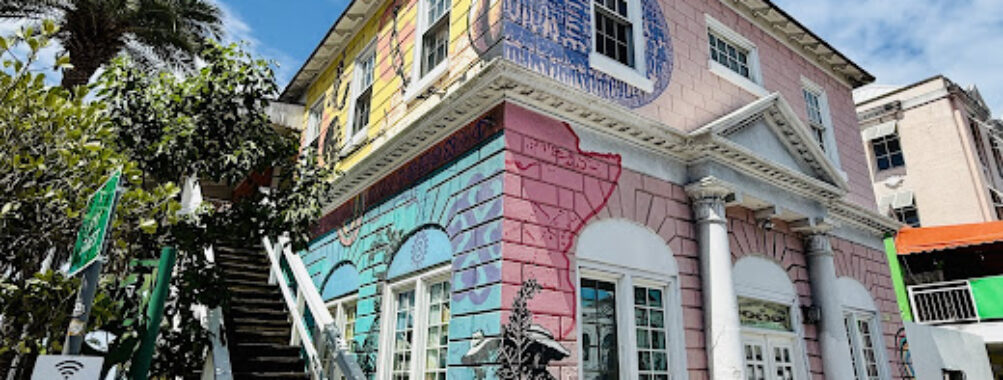
Pompey Museum
Table of Contents
Description
The Pompey Museum tells a story that’s as raw as it is necessary. Set in Nassau’s oldest surviving building, this museum stands on the very ground where enslaved Africans were once sold in the 18th century. It’s hard not to feel something as you step through those old wooden doors—the air feels heavier, almost charged with memory. The museum isn’t flashy or overly polished, and honestly, that’s part of its power. It doesn’t try to sugarcoat anything. Instead, it invites you to look history straight in the eye.
Inside, visitors find exhibits that trace the brutal realities of slavery in the Bahamas while also celebrating the resilience, creativity, and strength of the people who endured it. There are artifacts, documents, and personal stories that bring the past to life in a way that’s deeply human. Some displays might make you pause longer than expected—like the lists of names or the hand-forged shackles that remind you these weren’t just “slaves” but real people with families, dreams, and dignity.
The museum is named after Pompey, a Bahamian slave who led a courageous rebellion in 1830. His defiance became a symbol of freedom, and his story still resonates today. Walking through the rooms, you’ll notice the creak of the old floors and the faint smell of aged wood—it’s like the building itself remembers. It’s not a large museum, but it leaves an impression that lasts far beyond your visit.
Sure, some visitors might wish for more interactive displays or modern tech, but the simplicity works here. It’s raw and real, and that’s what makes it unforgettable. If you’re the kind of traveler who values authenticity over gloss, this place will speak to you. It’s not a “fun” museum in the typical sense, but it’s one that matters. You’ll walk out a little quieter, maybe even a little changed.
Key Features
- Historic Significance: Located in Nassau’s oldest public building, once the site of 18th-century slave auctions.
- Powerful Exhibits: Displays that explore the transatlantic slave trade, Bahamian emancipation, and the legacy of resistance.
- Authentic Artifacts: Original documents, shackles, photographs, and cultural items that bring history to life.
- Educational Programs: Occasional talks and community events that highlight Bahamian heritage and identity.
- Accessibility: Wheelchair-accessible entrance, restrooms, and parking for inclusive access.
- Family-Friendly: Suitable for older kids and teens—though parents might want to prepare younger ones for the emotional weight of the exhibits.
- Central Location: Perfectly placed within Nassau’s historic district, making it easy to combine with nearby attractions.
Best Time to Visit
If you’re planning a trip, the cooler months from December to April are ideal. The weather’s pleasant, and cruise crowds are manageable if you go early in the morning. I’ve visited around midday once, and let’s just say trying to absorb heavy history while sweating under Bahamian heat isn’t the best combo. Early mornings or late afternoons offer a quieter, more reflective experience.
The museum itself doesn’t take long to explore—maybe an hour or so—but it’s worth taking your time. The emotional weight can sneak up on you, so don’t rush it. If you’re visiting during local festivals or cultural events, the museum often ties in special exhibits or talks that add even more depth to your visit.
How to Get There
Getting to the museum is straightforward if you’re in downtown Nassau. Most visitors arrive on foot from the cruise port—it’s just a short walk away. If you’re staying further out, taxis and local jitneys (the island’s minibuses) are reliable and inexpensive. I personally prefer walking because it gives you a chance to soak in the colonial architecture and street life along the way.
Parking is available nearby, though it can be limited during busy hours. If you’re driving, aim to arrive early or later in the afternoon. The area is safe and well-patrolled, but as with any tourist spot, keep an eye on your belongings.
Tips for Visiting
Before you go, it helps to know that this isn’t your typical “museum selfie” stop. It’s a place for reflection. That said, here are a few tips from someone who’s been there more than once:
- Take your time. The museum isn’t big, but every display tells a story. Read the plaques, listen to the audio snippets, and let it sink in.
- Bring water. Especially if you’re walking from the port or exploring the area afterward. The Bahamian sun doesn’t play around.
- Prepare emotionally. Some exhibits can be tough to process. It’s okay to step outside for a breather if you need to.
- Ask questions. The staff are incredibly knowledgeable and passionate about Bahamian history. They’ll happily share insights you won’t find on the signs.
- Support the museum. There’s a small gift area with locally made crafts and books—buying something helps keep the museum going.
- Combine your visit. Afterward, explore nearby historical landmarks or grab a bite at a local café. It helps balance the emotional heaviness of the museum experience.
I’ll be honest—this museum isn’t about entertainment; it’s about understanding. And maybe that’s why it sticks with you. The Pompey Museum doesn’t just tell history—it makes you feel it. It reminds you that the Bahamas’ beauty isn’t just in its beaches but in its people’s strength and survival. If you care about culture, truth, and the stories that shaped the Caribbean, this is one stop you shouldn’t skip.
You might leave with more questions than answers, but that’s kind of the point. History isn’t neat or comfortable, and the Pompey Museum doesn’t pretend it is. It’s a quiet, powerful space where the past whispers—sometimes painfully, sometimes proudly—but always truthfully. And that’s what makes it worth every minute.
Location
Places to Stay Near Pompey Museum
Find and Book a Tour
Explore More Travel Guides
No reviews found! Be the first to review!